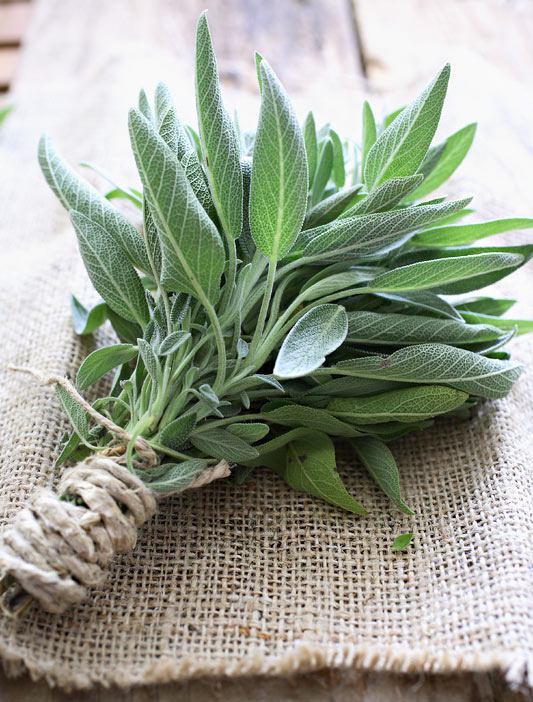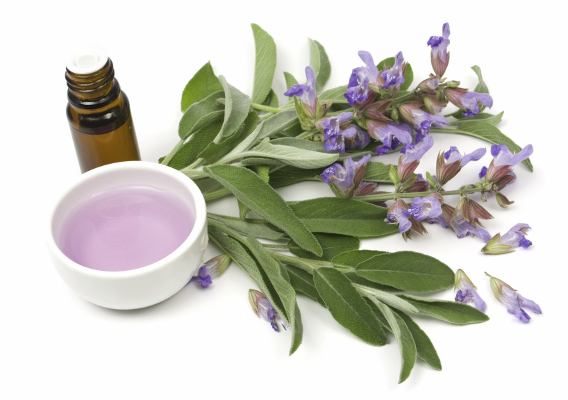Sage is one of the most diverse plants. The Latin name for sage, “Salvia,” means in good health. Even in Ancient Egypt, sage juice helped women conceive and eased difficult childbirths. Sage is rich in phytoestrogens that aid in the development of reproductive organs in women. Additionally, you can successfully grow
sage on a windowsill
.

There is a species of sage with hallucinogenic properties, which the Gaulish druids used to predict the future and communicate with the otherworld.
Chemical Composition of Sage
- Cineole - a component of essential oil, acts as an antiseptic and expectorant, an aromatic component of synthetic essential oils, has a camphor-like smell.
- Thujone - the substance attributed to hallucinogenic properties. Its concentration in the herb is too low to cause any harm to health. Found in absinthe.
- Borneol — a fragrant substance, a component of perfumery compositions.
- Camphor
- Alkaloids
- Flavonoids
- Phytoncides
- Tannins
- Ursolic Acid — helps with muscle atrophy, reduces fat in tissues, glucose in the blood, cholesterol and triglycerides, acts as an anti-inflammatory, anti-tumor, and antimicrobial agent. Prevents skin cancer and the formation of tumors. Used in cosmetics as an anti-inflammatory and antimicrobial component. Applied in the therapy and prevention of melanoma in several countries. Stimulates hair growth by activating hair follicles, protects against dandruff.
- Oleic Acid — an important energy source, a plastic substance in perfumery.
- Chlorogenic Acid — a powerful antioxidant, exhibits antimutagenic, antimicrobial, and antiviral activity.
- Uvaol - a natural anti-inflammatory with a diuretic effect.
- Linolenic Acid or Linoleic Acid — an essential fatty acid, belongs to omega-6.
- Salvian - a natural plant antibiotic.
Vitamins:
Vitamin A, Beta Carotene, Lutein, Vitamin E, Vitamin K, Vitamin PP.
Micro and Macro Elements:
Potassium, Calcium, Magnesium, Sodium, Phosphorus, Iron, Manganese, Copper, Selenium, Zinc.
The highest concentration of beneficial substances in sage occurs during the seed ripening period, during which valuable essential oil is extracted.
Benefits of Sage
Sage has powerful anti-inflammatory and antimicrobial effects. Traditional medicine uses sage for oral rinses as one of the components in the treatment of periodontitis, stomatitis, abscesses, and angina. The antibiotic salvian found in sage inhibits the development of Staphylococcus aureus, suppresses its hemolytic and dermatonecrotic properties. Sage essential oil exhibits antifungal activity. The therapeutic properties of sage deserve a separate article.



